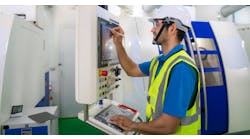The world of printed circuit boards — PCBs — is changing constantly thanks to new and emerging technologies, but also because of the market for PCBs: Raw material supplies dry up, or become more challenging to procure. Environmental changes or customer demands reshape product design and development.
PCBs are thin plates of fiberglass, composite epoxy, or other laminate material inscribed ("printed) with conductive pathways that make it possible to connect components like transistors, resistors, and integrated circuits, so that data can be collected and distributed and functional networks can be established.
New capabilities and functions for PCBs emerge continuously, introducing entirely new methods and applications. Information technology, meaning the science of computing, the world of PCBs, changes so much and sometimes so rapidly that it is difficult to predict what trends or patterns will be most significant to PCB users — meaning manufacturers but other industries too, as well as consumers. One has to look at the changes that have happened, that have gained or are gaining a foothold within the industry in a relatively short period. These are some of those trends, and accompanying challenges, that will be instrumental to the future of The world of printed circuit boards:
1. Increasing demand for high-power boards — Thanks to many new technologies and solutions, there’s a growing demand for high-power boards above 48 volts. Typically, higher voltage levels are associated with solar energy applications, as most panels operate in the range of 24 to 48 volts. Electric vehicles, on the other hand, crank those numbers up to 11, with voltages in the hundreds.
One particular reason for increasing the power of PCBs is the option to accommodate more substantial and abundant components. Expansive battery packs, for instance, would allow a device or system to operate longer, and these are in high demand, too. The PCBs that support such applications need to be more capable, efficient, and powerful.
The problem? PCB manufacturers must slim their products down to unprecedentedly small sizes. Yet, even thin and lightweight boards are capable of producing incredible amounts of heat. Ultimately, heat production and thermal density have risen because of how much more powerful a board and its components have to be.
Thermal design and heat dissipation must be optimized, even for high-power boards, which is a significant challenge to designers.
2. More PCBs for IoT and open communications — The Internet of Things presents quite a fascinating challenge for virtually every industry, including the PCB sector. In the past, this technology mainly focused on consumer-grade devices, offering remote monitoring and controls through open-data connections. This is still the case, but IoT is much more prevalent in commercial industries today, such as manufacturing, retail, development, and much more.
The nature of IoT devices is that they are generally compact and portable, yet packed to the brim with functionality. So, they require substantial boards, many of which push the limits of what you can do with a lightweight PCB.
Complicating things is the design detail that requires security to be built-in as a foundational element. That means printed circuit boards need to incorporate more advanced forms of protection against tampering, whereas formerly the more significant concern was protecting the board and its components from environmental changes.
IoT-ready PCBs also have to meet rather stringent standards and regulations, which directly govern their development. A lot more goes into the design and construction of PCBs for IoT-related technologies, despite their compact sizes.
3. The rise of flex boards — Both flex boards and rigid-flex boards have risen in popularity for PCB manufacturing recently, two design methods that used to be much rarer.
Flexible circuits are ideal for more specific applications, including medical devices, implants, sensors and mobile consumer electronics. They are an excellent choice for designs in which space, weight and size limitations are quite strict. They’re also better suited to high-temperature and high-density applications.
Rigid-flex boards, on the other hand, are a hybrid of rigid and flexible design methods. They exhibit features from both ends of the spectrum, but may not match one or the other objective particularly well. In many cases, they become a sub-board, one that is attached to either pure flexible or rigid boards, creating additional layers. However, multi-layer PCBs can be quite complex, with several steps added to the design phase.
Both types offer functional benefits like increased capability, smaller size and weight, and higher reliability ratings. Also, because they are designed differently to traditional rigid boards, they offer a more extensive selection of material options for development.
4. Tighter supply chain controls — Cybersecurity is on nearly everyone’s mind these days, but not only regarding software — the hardware is a challenge, too. For instance, counterfeit components are a growing problem, especially as electronics become the go-to for critical systems in specific industries like manufacturing. The digital revolution has called for more and more electronics, all of which require PCBs and attached components.
As boards themselves evolve, along with components, many novel and innovative designs will emerge, introducing new opportunities for deception and counterfeiting. The market will need to tighten its oversight on the supply chain, boosting both accountability and visibility for all involved parties.
In particular, new PCB manufacturing methods and standards must be developed to screen out potential applications for fake or vulnerable elements.
5. The spread of COTS components — Many PCB manufacturers are turning now to commercial off-the-shelf components, aka COTS components. These are ready-made solutions (as opposed to being custom-developed in-house) that not only speed up and improve the design process but offer benefits of varying degrees.
Because third-party elements must meet stringent standardization and regulation guidelines, COTS are excellent news for critical and space-based systems. A higher degree of reliability and efficiency can be achieved, with a much lower overhead.
Some PCB experts worry that rampant commercialization of design could mean less regulation of components, as it portends a much reduced need to vet them: If everyone knows they’re receiving PCB products from a reputable source and that they are produced to higher quality standards, there will be an assumption that regulation will be minimized. Whether this plays out in real life or not remains to be seen.
New standards of PCB production — These trends signify the coming changes in PCB design and manufacturing, and some are likely to be more disruptive to the current market than others. But, they also show positive forward momentum in terms of design innovation and performance planning.
The PCB industry as a whole is evolving and improving, not just in regard to product design and reliability but also in response to more unified regulations and commercial standards. 2020 will be a period of innovation for the world of printed circuit boards.
Kayla Matthews writes about the IoT, IIoT, automation and smart technologies for publications like InformationWeek, Manufacturing.net, Robotiq others. Follow Kayla at her personal tech blog, Productivity Bytes.






